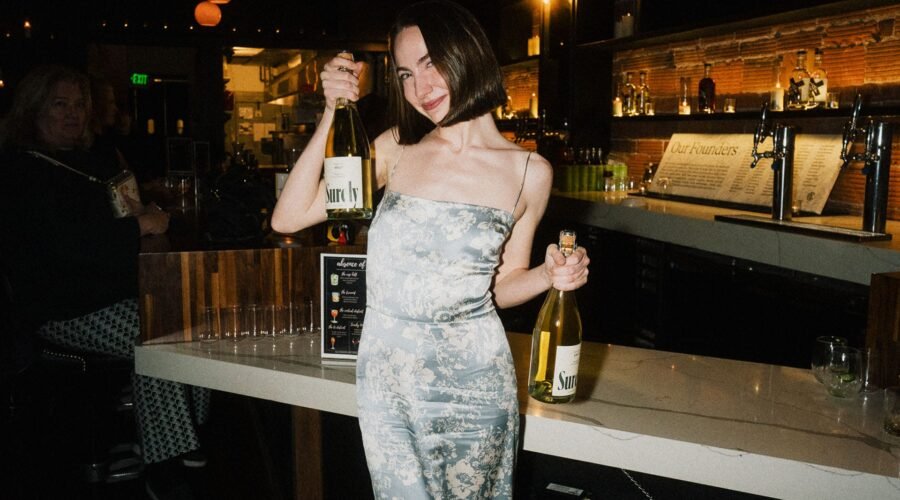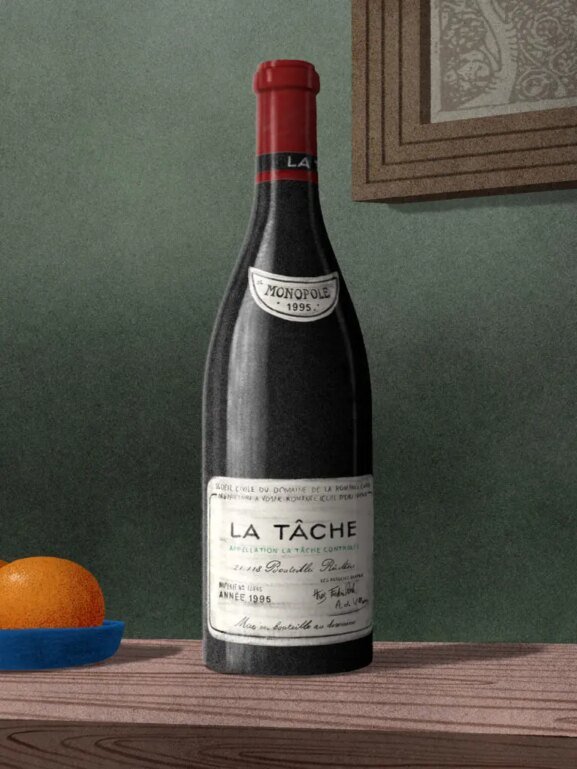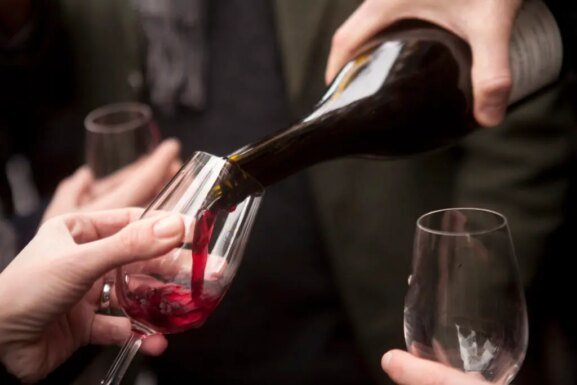Culture: As More Drinkers Ditch Booze, Non-Alcoholic Bars Offer Essential Social Spaces
What makes a bar, well, a bar? For Chris Marshall, founder and owner of booze-free Sans Bar in Austin, Texas, it’s more than just the drinks. For him and others, atmosphere, service and community play just as big a role as booze.
That’s not to say that zero-proof cocktails are an afterthought. At Sans Bar, the menu is peppered with complex concoctions, from the Longhorn cocktail, a zingy blend of mango, habanero and a lemon-cucumber-serrano NA spirit, to the herbaceous Sage and Sound, which features non-alcoholic (NA) gin, sage, aromatic bitters and tonic. These drinks and others like them have proven so popular that since the first Sans Bar opened in 2017, Marshall has added several other locations throughout Texas.
Additional NA watering holes have sprouted up since. According to Zero Proof Nation, an organization that highlights bars and bottle shops specializing in NA options, there are currently more than 50 NA-dedicated bars in the U.S., with that number steadily growing. What’s more, consumers spent $3.3 billion on no- and low-alcohol products in 2021 alone, according to Nielsen data. Zero-proof tasting rooms and pop-up events across the country are on the rise, too.
All of these things suggest that the popularity of NA products and spaces may extend well-beyond trends like Dry January or Sober October. The age of mainstream sobriety may very well be upon us.
But without alcohol, can these establishments credibly call themselves bars? Many of the beverage pros we interviewed certainly think so. Here’s how establishments and pop-up events around the country are creating top-notch bar experiences—minus the hangover.
You can have a drink alcoholic or otherwise anywhere you please, be it your home, the park or a restaurant, Marshall explains. But bars are about more than imbibing.
“A bar is a place where people gather in community,” he says. And while non-alcoholic bottle shops are also booming, they’re not always communal spaces.
“The bar in our culture provides a social space that’s needed to facilitate interactions you wouldn’t have in, say, a restaurant or coffee shop,” notes Justin Mendoza, a health and wellness coach and psychotherapist who frequents Volstead by Unity, Philadelphia’s first zero-proof bar. “For someone who, for whatever reason, doesn’t drink, is shifting their relationship with alcohol or supports someone who’s made that choice, having the ‘bar’ space but knowing it’s free of any alcohol can be liberating.”
Compared to regular bars or nightclubs, non-alcoholic nightlife can for some be a more welcoming community, notes Elizabeth Gascoigne, founder & CEO of New York City-based Absence of Proof. When she stopped drinking in 2022, “there was a huge adjustment in my social life,” she recalls. Finding ways to enjoy the Big Apple’s vibrant nightlife scene sans-alcohol was an uphill battle, Gascoigne found. So she created her own space.

“At first, I was all about the drinks, but what’s more important to us now is the community we’re building,” she explains. “We don’t want it to be a cool-kid place, we want people to leave with friends they might not have had before they came.”
That said, Absence of Proof’s spaces are pretty cool. From speakeasies to clubs, the operation’s NA pop-up events feature all the trappings of scene-y bars, including mood lighting, loud music, a well-heeled crowd and bartenders mixing up beverages like NA lychee martinis or spicy NA margaritas. Clearly she’s doing something right: In less than a year, Gascoigne has expanded Absence of Proof to Los Angeles, Seattle and Detroit.
The clientele at NA spaces can be varied, which helps further cement a bar vibe. Hekate in New York City’s East Village, for example, attracts an especially wide range of customers, from curious out-of-towners to people who don’t drink for religious reasons. Among the standard clientele are people on first dates, teenagers, NYU students and more, says head bartender Nette Moreno.
“It really feels like a bar,” she explains, especially when patrons are shifting tables and making friends. “I know it’s a successful night if people played musical chairs.”

Creating Atmosphere Through Design and Décor
The fact that many zero-proof bars look like regular bars is not an accident. At Volstead, which is also a vegan restaurant, there’s a custom-made, live-edge wood bar top with shelves of glistening bottles behind it. Having this traditional set-up is both a familiar sight and enables customers to easily see the rapidly growing number of non-alcoholic spirits, wines, beers and bitters on offer.
“The decor is very much like a traditional bar, but also what you would expect in an upscale vegan restaurant in a hip urban neighborhood,” says Mendoza. At Volstead, that translates to moody dark green walls and black and gold accents, plus a greenery-covered accent wall. “In my view, it helps make being sober or sober curious more appealing and accessible.”
A similar sentiment is behind the design of Sans Bar, explains Aranzasu De La Mora, founder of Aranzasu Design + Build, which designed the space. “The bar is meant to look and feel like a regular bar, only with the subtle twist of removing the option [or] pressure to have alcohol,” says De La Mora, who’s also designed drinking spots, clubs and restaurants in Austin, San Antonio and Tulum.

“I wanted the space to be inclusive [and] inviting to the customer that had typically spent time in traditional bars” he says.
To that end, De La Mora kept all but one of the original brick walls in the 150-year-old building that Sans occupies, adding a mural by a local artist to give the space an authentic Austin vibe. The décor also features intimate lighting and a bar accentuated with emerald tiles. This focus on traditional bar-like aesthetics applies to the drinks themselves, too.
“There’s a big difference between having a Coca-Cola and having an NA cocktail,” notes Gascoigne. When creating her pop-ups, small details like glassware and garnishes make a difference.
Making It the ‘Real Thing’
Expert staff also contribute to giving NA bars more legitimacy. “I believe in hiring bartenders who still drink alcohol because it’s been 16 years since my last drink,” Marshall divulges. A bartender with the palate of a traditional mixologist helps ensure that Sans Bar’s offerings are on par with alcoholic offerings at respected mainstream cocktail dens.
In fact, all of the bars mentioned in this story employ bartenders with traditional bar backgrounds. (Volstead also employs those in recovery and returning from incarceration).
“I feel really lucky [that] I have an awesome team of bartenders,” says Gascoigne. “A lot of bartenders, this is their craft and they’re not interested in the NA space. We want people who are passionate about mixology, but open to and excited about NA.”
At the end of the day, the most successful NA establishments deliver a traditional bar experience. “Sans Bar feels like a bar because it is one,” says Allison Cole, a regular patron. “There are bartenders, a curated menu, music [and] people out enjoying themselves—it’s a bar. People going out to bars are seeking to fulfill a need, at least I know I am. At Sans, beyond the drinks and music, I find connection and community.”
Of course, one key difference remains. “We aren’t seeking to go out and lose ourselves,” Cole says. “We are instead present.”
Published: July 21, 2023


